
AI and the Retail Marketer’s Future
How AI transforms strategy and processes, driving the adoption of Positionless Marketing
Exclusive Forrester Report on AI in Marketing
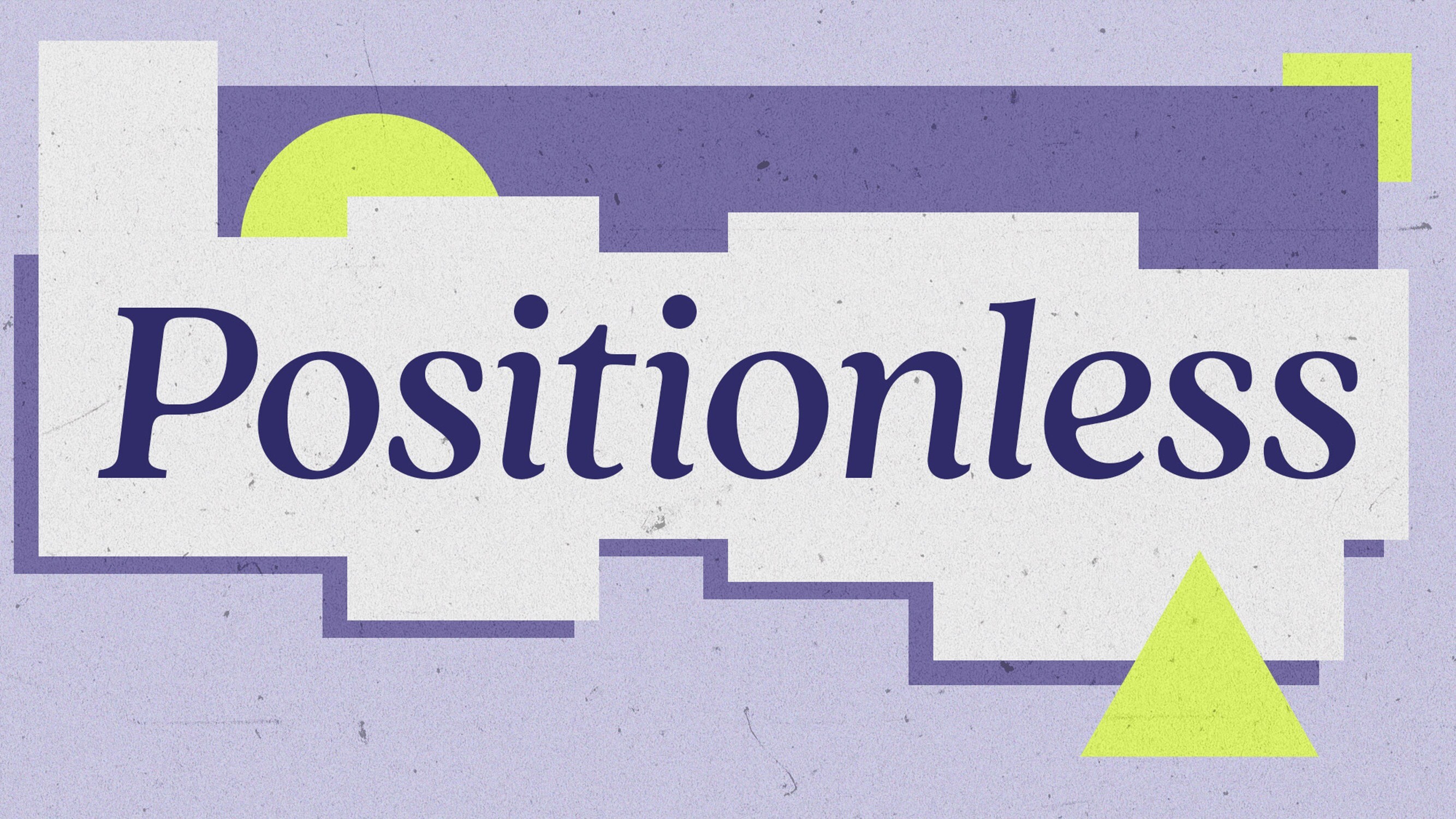
Folks don’t look now; the FIFA World Cup is (almost) here again. The world’s population is basically split right down the middle on this one. The first group is ecstatic at the prospect of just under a month of great soccer festival, non-stop matches, commentaries, stats, and perhaps even bets. The second group is distraught at the exact same prospect. Let the battle for the remote commence.
But we want to discuss a third group: marketers. Just like each of the 32 national teams participating in the tournament (Nov 21 – Dec 18), marketers too need a strategy to win. Unlike national teams, though, an on-pitch strategy isn’t enough: marketers must split theirs into three phases – pre-World Cup, during the tournament, and finally, one to follow. Past big events generated double the revenue compared to regular off-season events, so naturally, the mega event of the soccer world represents a considerable opportunity no matter who you are.
Watch this space for more World Cup insights
This post will certainly not be our only dive into World Cup-related strategies. Over the following weeks and months leading up to the event, we’ll discuss how to handle various segments of players like new, reactivated, churned, and others. We’ll look into the numbers, show you the expected behavior of players from various countries, and more. We’ll also touch on ways to maximize your marketing activities by using mobile and email channels.
Our first tip? Subscribe to our newsletter at the bottom of this page, so you don’t miss any of it.
Why should you listen to us though? Well, Stake followed the below principles in the last Euro tournament, and this is what it got them. You can read more about their case study here.
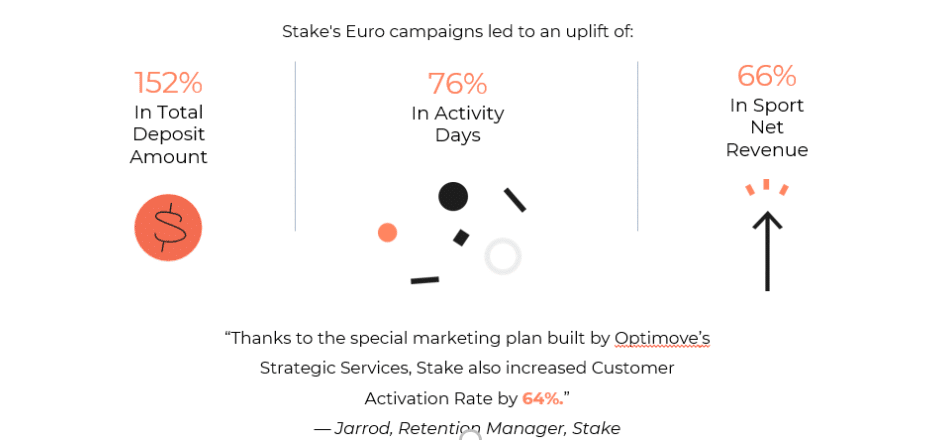
Firstly, the coming World Cup will be held in Qatar (Time zone is +3 GMT), the first in the Middle East and Arab World. It will span just 28 days rather than the usual month. But the main challenge is probably that it will be held in November, essentially disrupting national leagues. On the other hand, this mitigates the usual post-World Cup lull turning a challenge into an opportunity.
As a first step, your marketing plan should consider the following basic assumptions:
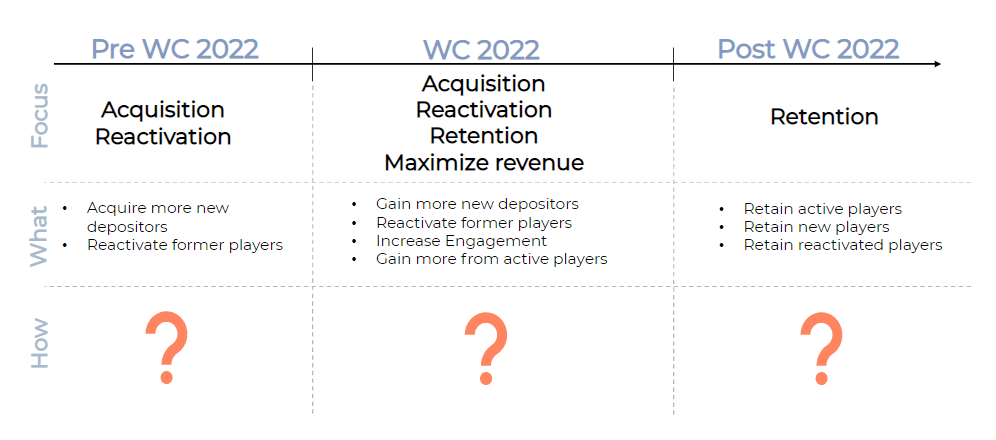
An overview of your plan
So, let’s get right to it, shall we?
**Build your player base -**Bottom line? New and reactivated players are the ones you should be focusing on at this stage.
To acquire new high lifetime value players, identify your best-performing existing ones and reverse-engineer their acquisition. Here is an old blog we wrote on the subject.
Several points to keep in mind:
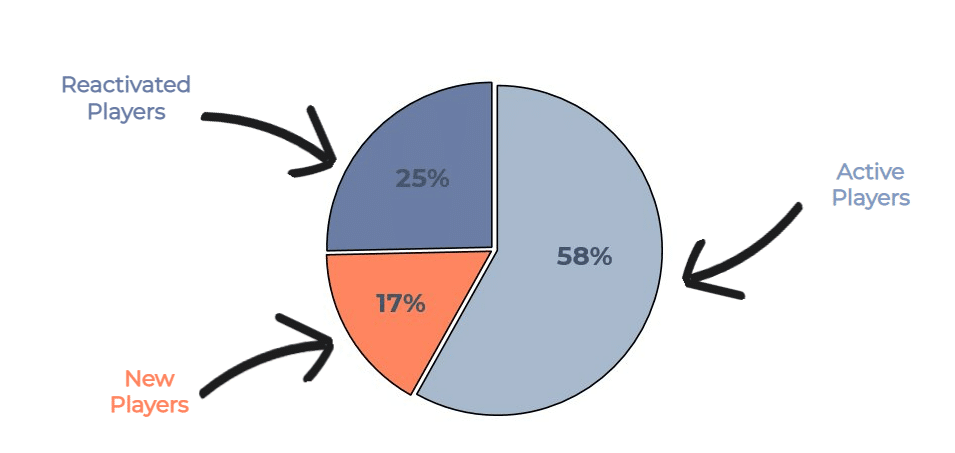
Big Event players split
**Set yourself up for success -**Build your calendar starting with all matches and match times while marking your important events. Analyze and segment your audience into differentiated groups: Non-Depositors, New one-time depositors, New multi-time depositors, Active with High Risk of Churn, Live bettors vs. non-live bettors, Mobile bettors vs. non-mobile ones.
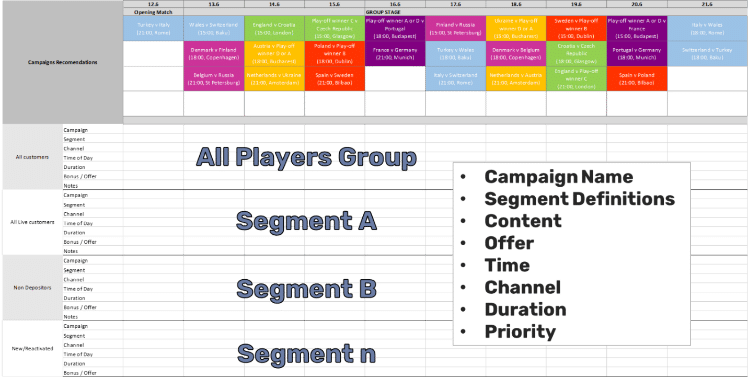
Example of big event calendar
Increase Engagement- Optimize each message by leveraging personalized content, creating a sense of urgency, using dynamic content in multichannel campaigns, incorporating educational content, and driving special World Cup loyalty programs and gamified campaigns.
Gain more from active players- Did you know that the probability of a player placing a bet on his own national team’s match is +40% higher than an average match played during the group stage? That alone should affect some of your marketing activities. For example, if Spain plays England, invest more in betting promotions for that match in the rivalling countries, rather than just anywhere.
Some key points to remember:
In the table below, you can see the neighboring countries tend to stick together; for example, the Spaniards are 62% likely to bet on their national team, but in their absence, they’ll probably bet on Portugal.
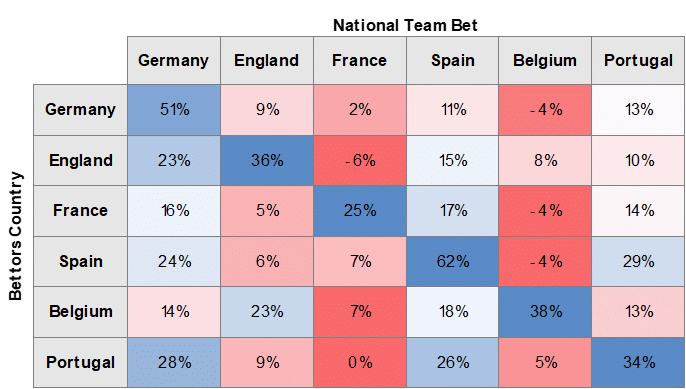
Example of European betting preferences by country
Retain players- Most bettors activated during the World Cup will Churn. Historically, new players acquired during sporting events have a 25% lower retention rate. Chances are your casual players won’t be terribly interested in betting on other events, so try to tie the tournament they just watched into bets on their national leagues. For example, the gap between the World Cup final and the resumption of the English Premier League is just eight days; take advantage of this fact and try to link the events. For countries with longer breaks, try to find “surrogate events” to keep the momentum going. Incentivize deposits immediately for 0 balance users and those who have made a withdrawal and offer early preferential rates on bets made towards the resumption of other sports.
You do not want to miss out on peak events
Look, we know a thing or two about Peak Events. We have two World Cups and two Euro tournaments under our belt, not to mention almost a decade of retail-related events like Black Friday, Cyber Monday, Christmas, and others. The plan we laid out above is a result of hundreds of millions of players and deep analysis of that behavior. That huge mountain of data tells us that – retention rather than acquisition should be on your mind and you should be mindful of quick post tournament churn. It also tells us that when you get your marketing plan right, you’ll reap massive rewards.
About four months before the November 21 opening match at the Al Thumama Stadium when Senegal will take on the Netherlands, there’s still time to tweak your marketing plan for each phase and lifecycle stage. And remember, this is just the first of many World-Cup related posts we have in store. Stay tuned, or better yet, subscribe to our newsletter below.
Exclusive Forrester Report on AI in Marketing
In this proprietary Forrester report, learn how global marketers use AI and Positionless Marketing to streamline workflows and increase relevance.


Writers in the Optimove Team include marketing, R&D, product, data science, customer success, and technology experts who were instrumental in the creation of Positionless Marketing, a movement enabling marketers to do anything, and be everything.
Optimove’s leaders’ diverse expertise and real-world experience provide expert commentary and insight into proven and leading-edge marketing practices and trends.


